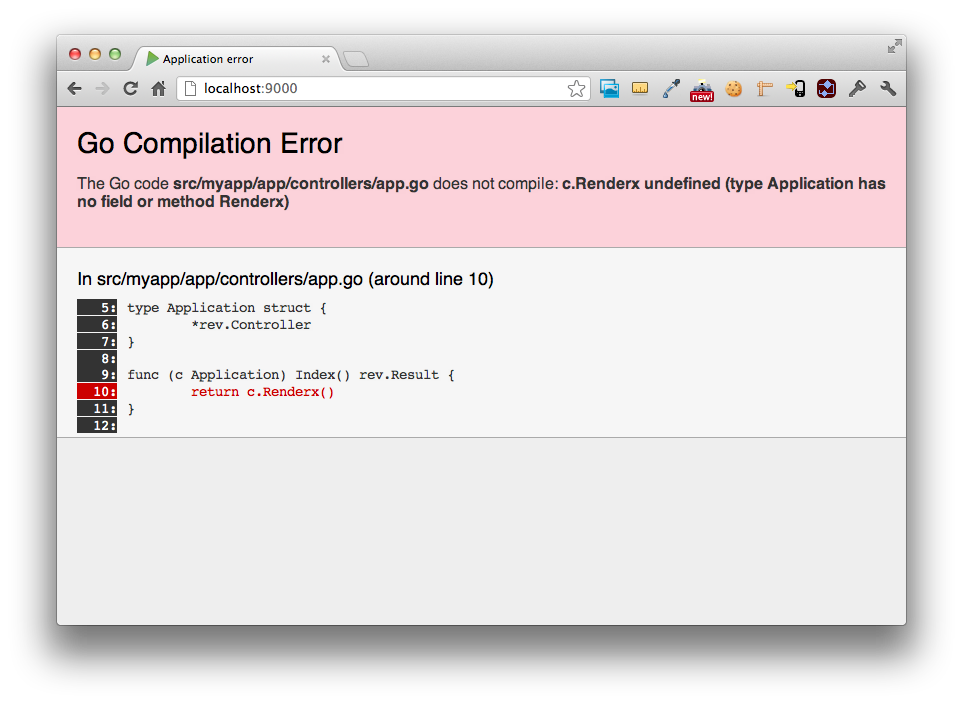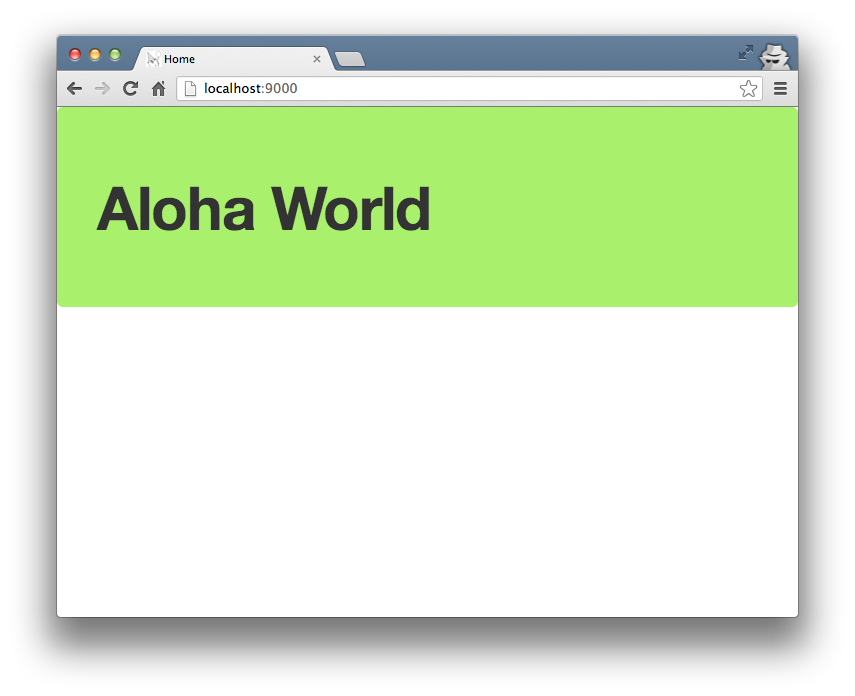In the previous article we created a new Revel application called myapp. In this article we look at how Revel handles the HTTP request to http://localhost:9000/, resulting in the welcome message.
The first thing that Revel does is check the conf/routes file – the generated routes file contains a route:
GET / App.Index
This tells Revel to invoke the Index method of the App controller when it receives a GET request to /.
Let’s follow this call to the code, in app/controllers/app.go:
package controllers
import "github.com/robfig/revel"
type App struct {
*revel.Controller
}
func (c App) Index() revel.Result {
return c.Render()
}
All controllers must be structs that embed *revel.Controller
in the first slot (directly or indirectly). Any method on a controller that is
exported and returns a revel.Result may be treated as an Action.
The Revel controller provides many useful methods for generating Results. In
this example, it calls Render(),
which tells Revel to find and render a template as the response (200 OK).
All templates are kept in the app/views directory. When an explicit template name is not specified, Revel looks for a template matching the action. In this case, Revel finds the app/views/App/Index.html file, and renders it as a Go template.
{{set . "title" "Home"}}
{{template "header.html" .}}
<header class="hero-unit" style="background-color:#A9F16C">
<div class="container">
<div class="row">
<div class="hero-text">
<h1>It works!</h1>
<p></p>
</div>
</div>
</div>
</header>
<div class="container">
<div class="row">
<div class="span6">
{{template "flash.html" .}}
</div>
</div>
</div>
{{template "footer.html" .}}
Beyond the functions provided by the Go templates, Revel adds a few helpful ones of its own.
This template is very simple. It:
If you look at header.html, you can see some more template tags in action:
<!DOCTYPE html>
<html>
<head>
<title>{{.title}}</title>
<meta http-equiv="Content-Type" content="text/html; charset=utf-8">
<link rel="stylesheet" type="text/css" media="screen" href="/public/stylesheets/main.css">
<link rel="shortcut icon" type="image/png" href="/public/images/favicon.png">
<script src="/public/javascripts/jquery-1.5.2.min.js" type="text/javascript" charset="utf-8"></script>
{{range .moreStyles}}
<link rel="stylesheet" type="text/css" href="/public/{{.}}">
{{end}}
{{range .moreScripts}}
<script src="/public/{{.}}" type="text/javascript" charset="utf-8"></script>
{{end}}
</head>
<body>
You can see the title being set, and you can also see that it accepts JS and CSS files included from calling templates in the moreStyles and moreScripts variables.
Let’s change the welcome message. In Index.html, change
<h1>It works!</h1>
to
<h1>Hello World</h1>
Refresh your browser, and you should see the change immediately! Revel noticed that your template changed and reloaded it.
Revel watches:
Changes to any of those will cause Revel to update your running app with the newest code. Try it right now: open app/controllers/app.go and introduce an error.
Change
return c.Render()
to
return c.Renderx()
Refresh the page and Revel will display a helpful error message:

Lastly, let’s pass some data into the template.
In app/controllers/app.go, change:
return c.Renderx()
to:
greeting := "Aloha World"
return c.Render(greeting)
In app/views/App/Index.html, change:
<h1>Hello World</h1>
to:
<h1>{{.greeting}}</h1>
Refresh the page and you should see your Hawaiian greeting.
